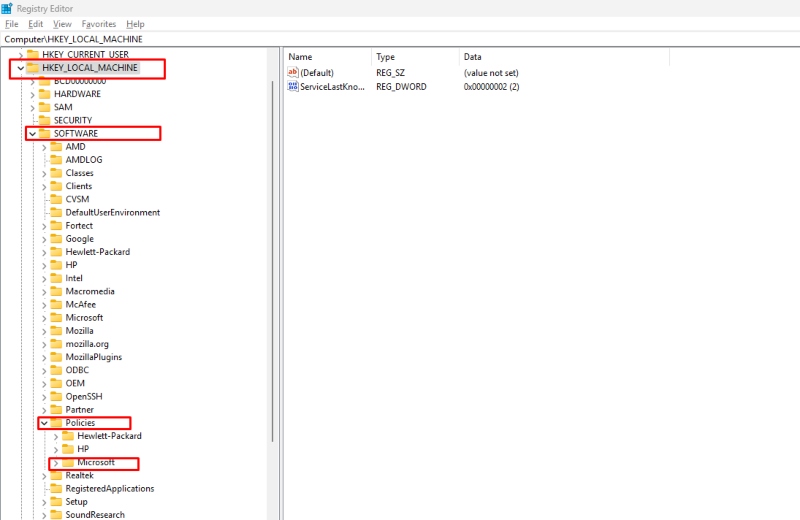SOLVED: Windows Defender Blocked by Group Policy
Windows Defender is a built-in security tool that helps protect your system from malware, viruses, and other threats. However, some users encounter an issue where Windows Defender is blocked by Group Policy, preventing it from running. This error often appears with messages like:
- “Group Policy turns off this app.”
- “Your IT administrator has limited access to some areas of this app.”
If you’re experiencing this issue, don’t worry. This guide will explain the causes and provide practical solutions for unblocking Windows Defender.
Why does Group Policy block Windows Defender?
Several factors can lead to Windows Defender being disabled by Group Policy:
- Third-Party Antivirus Software: Many programs disable Windows Defender upon installation to avoid conflicts. If an antivirus is installed, it may have modified Group Policy settings to keep Windows Defender turned off.
- Group Policy Restrictions: If your computer is managed by an organization (e.g., a workplace or school), an administrator might have applied Group Policy settings to disable Windows Defender.
- Registry Modifications: Specific registry keys can override Group Policy and prevent Windows Defender from running.
- Corrupt System Files: Damaged or missing system files can cause Windows Defender to be blocked or malfunction.
- Malware Infection: Some malware can modify Group Policy settings to disable Windows Defender, leaving your system vulnerable to further attacks.
How to Fix Windows Defender Blocked by Group Policy
1. Check for Third-Party Antivirus Software
If you have installed a third-party antivirus, Windows Defender may have automatically been disabled. To check:
- Press Ctrl + Shift + Esc to open Task Manager.
- Go to the Startup tab and look for any antivirus software.
- If found, uninstall it via:
- Press Win + I to open Settings.
- Go to Apps > Installed apps.
- Locate the antivirus, click Uninstall, and restart your PC.
After restarting, check if Windows Defender is enabled.
2. Use Group Policy Editor to Enable Windows Defender
If Windows Defender is disabled via Group Policy, you can manually enable it:
- Press Win + R, type gpedit.msc, and hit Enter.
- Navigate to Computer Configuration > Administrative Templates > Windows Components > Microsoft Defender Antivirus.
- Locate “Turn off Microsoft Defender Antivirus.”
- Double-click it, select Not Configured, and click Apply > OK.
- Restart your PC and check if Windows Defender is working.
Note: Group Policy Editor is only available in Windows 10/11 Pro, Enterprise, and Education editions. If you’re using Windows Home, try the Registry method below.
3. Enable Windows Defender via Registry Editor
If you cannot access Group Policy Editor, modify the registry:

- Press Win + R, type regedit, and hit Enter.
- Navigate to: HKEY_LOCAL_MACHINE\SOFTWARE\Policies\Microsoft\Windows Defender
- Look for “DisableAntiSpyware.”
- If found, right-click and select Delete.
- Restart your PC and check if Windows Defender is enabled.
4. Restart Windows Security Service
- Press Win + R, type services.msc, and hit Enter.
- Scroll down and find Microsoft Defender Antivirus Service.
- If it’s stopped, right-click and select Start.
- If it’s already running, right-click and choose Restart.
Check if Windows Defender is now active.
5. Run System File Checker (SFC) and DISM Scan
If system file corruption is causing the issue, use these built-in Windows tools:

- Open Command Prompt as Administrator.
- Type the following and press Enter: sfc /scannow
- Wait for the Scan to complete and restart your PC.
- If the issue persists, run:
- DISM /Online /Cleanup-Image /RestoreHealth
- Restart your computer and check Windows Defender.
6. Scan for Malware
If malware has modified Group Policy settings, perform a deep scan:
- Open Windows Security.
- Go to Virus & Threat Protection> Scan options.
- Select Full Scan and click Scan Now.
If malware is detected, remove it and restart your PC.
7. Fix Windows Defender Blocked by Group Policy with Fortect

If Group Policy blocks Windows Defender, your system is vulnerable to malware and security threats. Whether the issue is caused by third-party software, system misconfigurations, or malware tampering with your settings, you need a reliable solution to restore protection.
Fortect can help by automatically scanning your PC for system issues, fixing misconfigurations, and ensuring real-time malware protection. It identifies and repairs Group Policy restrictions that disable Windows Defender while optimizing your system for peak performance.
Download Fortect to restore Windows Defender, remove threats, and keep your PC secure in minutes.
Conclusion
If Group Policy blocks Windows Defender, your system can be vulnerable. Fortunately, you can restore Windows Defender’s functionality by checking for third-party antivirus, modifying Group Policy settings, editing the registry, restarting essential services, and scanning for malware. Follow the steps above to ensure your system remains protected.
By resolving this issue, you will regain access to Windows Defender’s real-time protection, which efficiently safeguards your PC from threats.



